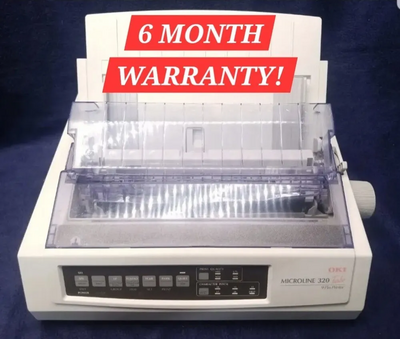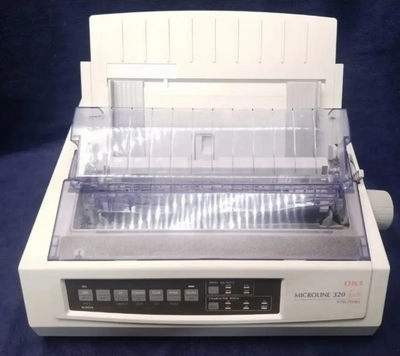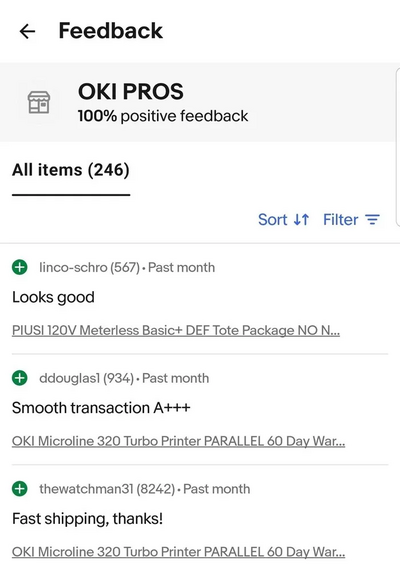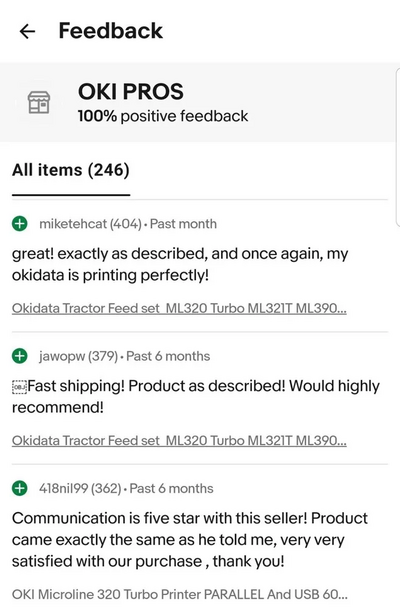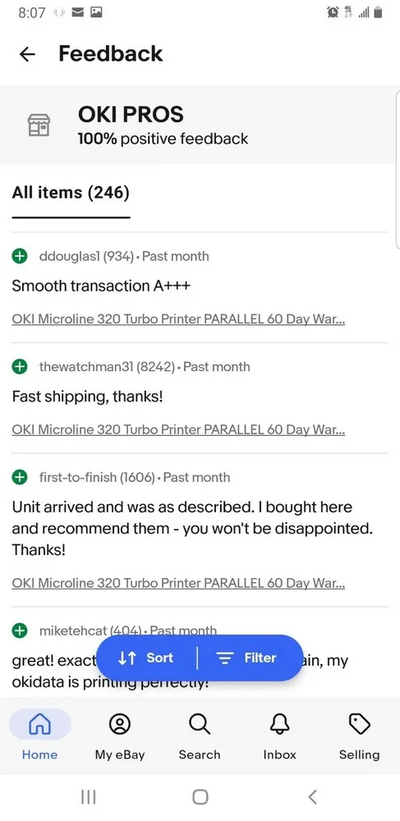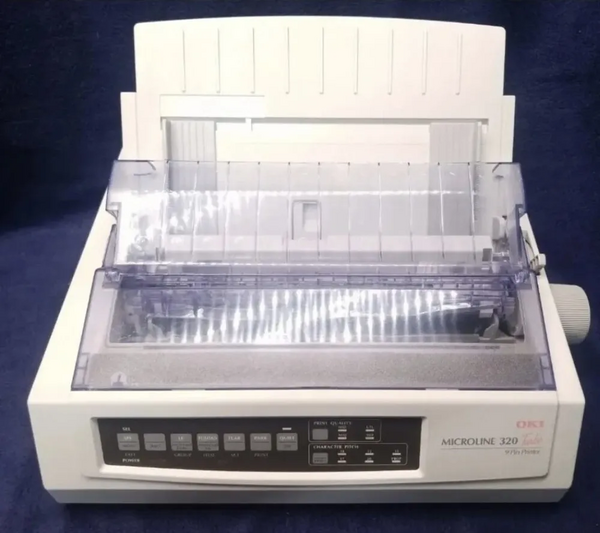
OKI 320 Turbo
| Brand | OKI 1992 |
| Model | GE7000A |
| Released Year | 1992 |
| Type | Printers |
| Series | Microline 320 Turbo |
| Status | Discontinued |
Quick view
Overview
The OKI Microline 320 Turbo is a dot matrix printer designed primarily for office environments where multipart forms and carbon copies are common. It uses 9-pin impact printing technology to produce high-quality text outputs. The printer supports tractor feed and friction feed paper types, capable of handling continuous, multipart forms efficiently. It operates at print speeds up to 435 characters per second in draft mode, optimizing fast document output. Connectivity options include parallel and serial interfaces, facilitating integration with a range of computers from that era. Its built-in buffer memory allows for smoother data handling and consistent print operations.
Specifications
| Input Type | Monochrome |
| Output Type | Black & White |
| Custom Bundle | No |
| MPN | GE7000A |
| California Prop 65 Warning | Yes |
| Type |
|
| Technology | Dot Matrix |
| Maximum Resolution |
|
| Manufacturer Warranty |
|
| Model |
|
| Connectivity | Parallel (IEEE 1284) and serial ports |
| Country/Region of Manufacture | Thailand |
| Product Line |
|
| Print Method | 9-pin dot matrix impact |
| Print Speed | Up to 435 cps (characters per second) draft mode |
| Print Resolution | 240 x 144 dpi |
| Paper Feed | Tractor feed and friction feed |
| Paper Types Supported | Continuous, multipart forms up to 6 parts |
| Buffer Memory | 64 KB |
| Character Sets | ASCII, IBM Graphics, Epson Extended |
| Dimensions (W x D x H) | Approx. 410 x 360 x 180 mm |
| Weight | Approx. 7.7 kg |
| Power Supply | AC 100-240V, 50/60 Hz |
| Noise Level | Approx. 58 dB(A) during printing |
| Operating Systems Supported | DOS, Windows 3.x, and other serial/parallel compatible systems |
| Discontinued | Yes |
| Supported Scanning Sizes | N/A |
| Grayscale Depth | N/A |
| Color Depth | N/A |
| Memory | N/A |
| Item Length | N/A |
| Item Height | N/A |
| Features | Portable |
| Item Width | N/A |
| Supported Paper Size | N/A |
| Image Sensor | N/A |
| Scanning Resolution | N/A |
| Black Print Speed | N/A |
| UPC | N/A |
Images
Key Advantages
The Microline 320 Turbo is robust and reliable, suitable for heavy-duty office printing needs. It offers excellent compatibility with multipart forms due to impact printing capability. Print speeds are competitive for its class, ensuring rapid document throughput. Its simple interface and memory buffer provide ease of use and reduce printing bottlenecks. The printer supports a variety of paper types and sizes, adding flexibility for different office printing tasks. Additionally, it has a low total cost of ownership considering maintenance and consumable costs.
Limitations
As a dot matrix printer, print quality is limited compared to modern laser or inkjet printers, especially for graphics. Noise levels during operation are higher than contemporary printers, which can be disruptive in quiet office settings. The resolution is relatively low at 240 x 144 dpi, restricting sharpness for fine text or detailed images. Connectivity options are outdated, lacking USB or network support, limiting compatibility with newer devices. The printer is bulkier and heavier compared to modern compact models. Consumables like ribbons need frequent replacement and might be harder to source.
FAQ
What type of printer is the OKI Microline 320 Turbo?
It is a 9-pin dot matrix printer designed for office use, particularly suited for multipart forms.
What is the print speed of the Microline 320 Turbo?
The printer can print up to 435 characters per second in draft mode.
Does the printer support different paper types?
Yes, it supports tractor feed and friction feed paper, including continuous and multipart forms.
What are the connectivity options available?
It includes parallel and serial interfaces for connection to computers.
Is the OKI Microline 320 Turbo still in production?
No, this model has been discontinued.
What is the print resolution of the printer?
The maximum resolution is 240 x 144 dpi.
Are replacement ribbons readily available?
Ribbons are available, though as the model is discontinued, sourcing them may require specialized suppliers.
Disclaimer
The content on is provided for general informational purposes only. We do not guarantee the accuracy, completeness, or reliability of any information, specifications, or visuals presented on the site.
is not responsible for any content, images, or data uploaded or shared by users. Users are solely responsible for the content they submit.
We may include links to third-party websites for convenience. We do not endorse or take responsibility for the content or policies of any external sites.
Use of the site is at your own risk. Always verify critical information independently before making decisions based on content from this website.

